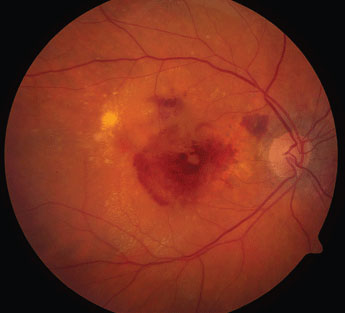 |
| Online educational materials for AMD patients are lacking in understandability, study observes. Photo: National Eye Institute. Click image to enlarge. |
The first thing most people do when learning of a medical condition they may have is to google it, and that’s as true in eye care as anywhere. Online educational materials empower patients with age-related macular degeneration (AMD) to learn about their disease and its risk factors and management, but new research has found that the available resources aren’t the easiest for patients to understand or put into practice.
The study examined 75 online materials, sourced from Google in Australia, New Zealand, the United States, the United Kingdom, Ireland and Canada. Three optometrists graded the materials for understandability and “actionability” using the Patient Education Materials Assessment Tool (PEMAT).
The mean understandability score was 74%. The PEMAT has several criteria for defining understandability, including the inclusion of a summary of key points. This criterion scored poorly among all materials and was included in only 14%. In terms of actionability, the mean score was 49% and the poorest-scored criterion among all materials was the inclusion of visual aids to make the instructions easier to follow. Visual aids were included in only 47% of sources.
The researchers suggested three areas of improvement: summaries, visual aids and a habit tracker as a tangible tool. “These improvements may empower patients to improve their understanding of disease prognosis, risk factors and eye assessment schedule requirements to optimize eye care delivery,” the researchers concluded in their paper on the work.
Table 1. Selected PEMAT Criteria for Educational Materials
Understandability | Actionability |
|
|
Wang E, Kalloniatis M, Ly A. Assessment of patient education materials for age-related macular degeneration. Ophthalmic Physiol Opt. May, 6, 2022. [Epub ahead of print]. |

